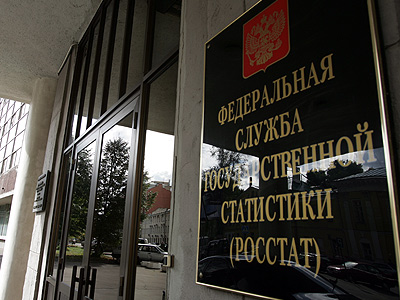
Regional Statistics—But Not Moscow’s—Point to Russia’s Demographic Collapse
Publication: Eurasia Daily Monitor Volume: 14 Issue: 38
By:

Rosstat, the agency of the Russian government responsible for assembling and publishing statistics, increasingly issues figures at variance with reality. This restoration of a Soviet-era pattern simultaneously makes it more difficult for the Russian government to manage that country and far more difficult for analysts—both Russian and Western—to keep track of what is going on (Ruscesar.livejournal.com, November 16, 2011). But there is one issue on which Moscow’s Rosstat is particularly misleading: the demographic collapse of the ethnic Russians.
For more than a decade, Rosstat, presumably on orders from the Kremlin, has not published ethnically arrayed data on many topics lest it become obvious how low Russian fertility and how high Russian mortality are relative to the non-Russian portions of the population of the Russian Federation. That has forced students of Russian demography to focus on data organized according to federal subjects and to treat the predominantly ethnic-Russian ones and the predominantly non-Russian republics as substitutes for the lacking ethno-national data. The reason for Moscow’s decision to try to conceal that is obvious: President Vladimir Putin insists that ethnic Russians are maintaining their share of the country’s total population, when in fact they are losing it not only because of massive immigration by Central Asians and South Caucasians but also because of these negative fertility and mortality trends.
But what is striking and especially important for researchers to take note of is the following: data gathered and published by foreign governments and, especially, by officials in Russia’s regions and republics highlight just how wrong Rosstat’s claims are and how the demographic trends in the Russian Federation are increasingly working against the ethnic-Russian majority. Over the past week alone, one study that compared Rosstat figures and those of foreign governments about Russian outmigration as well as three others by Russian regional officials highlight this pattern.
The Moscow Institute of Demography compared Russian government figures on outmigration from the Russian Federation with those of other governments about Russian immigration and concluded that Moscow was understating the size of this latest exodus in all three of the countries to which Russians are moving most often—Germany, Israel and the United States. Often, this difference was too large to be accounted for by anything other than complete and total dishonesty. For example, Rosstat reported that only 4,531 Russians moved to Germany in 2015, but German government sources declared that the actual number of Russian immigrants that year was 25,082 (Demoscope Weekly, No. 719–720, March 6–19).
Even more intriguing, at least as far as the future relative size of the ethnic-Russian and non-Russian populations of the Russian Federation as a whole are concerned, are three studies from the regions. The first, based on studies of alcohol consumption, medical expenses and life expectancy in the North Caucasus found that people in predominantly ethnic-Russian regions consume more alcohol, spend more on medical services, and have shorter life expectancies than those in predominantly Muslim republics (Regnum, March 21).
The second regional study, which examined mortality rates in the predominantly ethnic-Russian Sverdlovsk oblast found that despite Moscow’s repeated claims of improvement in mortality figures, the number of deaths per capita in that region had gone up significantly (Ekho Moskvy, March 21; Politsovet.ru, March 13). Other data suggests that Sverdlovsk is not an outlier but rather typical of many ethnic-Russian regions and in a better position than most of them. That leaves only two possible interpretations, both of which are profoundly negative for the Russian nation as a whole. On the one hand, the Rosstat data and Moscow’s claims about it could mean that mortality figures are improving significantly among non-Russians and thus pushing the overall death rate down even if Russian figures are going in the opposite direction. Or, on the other hand, that in this case as is apparently true in others, Rosstat is simply cooking the books in order to produce the numbers the Kremlin wants and that many in Russia and abroad rely on.
The third data set, from the predominantly ethnic-Russian Penza oblast, is in some ways the most interesting. As one could reasonably expect, given the other data, rising rates of alcohol consumption are not only driving up mortality rates but also lowering the birthrate there. In presenting these findings, Penza officials made an effort to exonerate Moscow. They suggested that this pattern—high rates of alcohol consumption and bad demographic numbers—reflected “a local cultural code” rather than some broader ethnic-Russian one (Kasparov.ru, March 17).
But that “defense” of Moscow’s claims contains within it a direct threat to Moscow’s assumptions: it suggests that while there is no ethnic-Russian pattern, there exists instead a “Penza pattern.” And if so, this highlights yet another weakness of the Russian nation.



